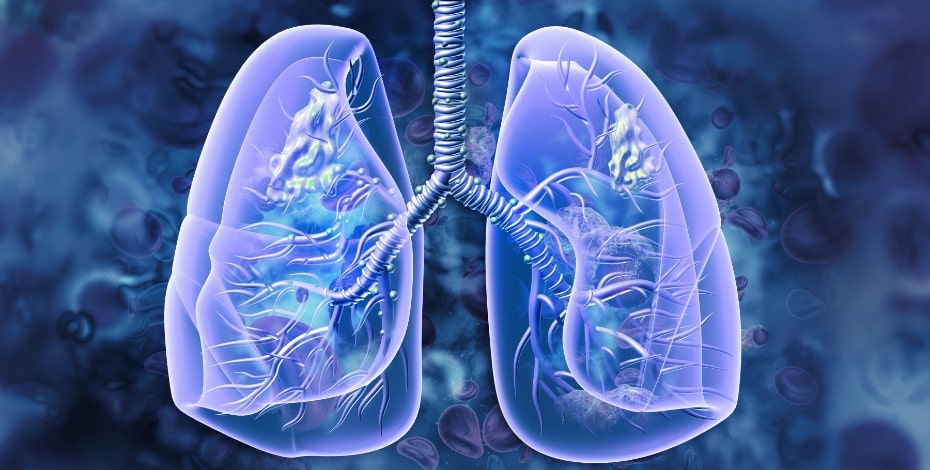
Physiotherapy management of bronchietasis in adults

Senior lecturer in physiotherapy at Monash University Dr Annemarie Lee has written an Invited Topical Review on physiotherapy management of bronchiectasis in adults. We asked her a few questions about it.
Your Invited Topical Review recognises a diverse array of causes of bronchiectasis. What is it that links all of them?
They all cause a clinical syndrome characterised by chronic infection, airway inflammation and persistent productive cough.
Diagnosis is confirmed via radiologically abnormal and permanent dilation of the bronchi.
Regardless of the cause, the pathophysiology is a cycle of inflammation, impaired mucus clearance and structural lung damage.
As well as chronic cough, breathlessness, lower exercise capacity and poorer quality of life are common in people with bronchiectasis, with acute exacerbations contributing to disease progression.
Your review recommends some interventions based on several high-quality randomised trials. What are they?
The foundation of physiotherapy in bronchiectasis is airway clearance therapy, with multiple techniques available.
Options include breathing exercises, positioning, manual techniques, positive expiratory pressure devices, high-frequency chest wall oscillation and intrapulmonary percussive ventilation.
These therapies are complemented by pulmonary rehabilitation with exercise training, often combined with education and self-management.
Systematic reviews have found that airway clearance techniques improved sputum expectoration and quality of life in the short term but had no effect on acute exacerbation rates compared to no therapy.
The findings of the longest study to date (12 months) are encouraging, showing that the combination of positioning and slow expirations lowers the frequency of exacerbations and improves quality of life compared to no therapy.
Comparisons of positive expiratory pressure devices to other types of airway clearance techniques found similar effects on sputum clearance, breathlessness, lung volumes and quality of life in the short term.
When applied to those in a stable clinical state, pulmonary rehabilitation improves functional exercise capacity and quality of life to a level of clinical significance but the benefits are not sustained.
The review also recommends respiratory muscle training. Why is that helpful in bronchiectasis?
Where respiratory muscle weakness is present, inspiratory muscle training has been indicated and consists of a mix of pressure threshold training and airway clearance therapy.
Improvements in maximal inspiratory pressures have been noted. Greater patient-centred outcomes in terms of quality of life and exercise tolerance appear to be achieved with higher-intensity training protocols.
Do physiotherapists also get involved in the other effective interventions you discuss based on moderate evidence, that is, oxygen therapy and mucoactive therapies?
Domiciliary high-flow nasal therapy providing humidified air or supplemental oxygen has been shown to improve sputum expectoration and, over the long term, reduce the frequency of exacerbations and enhance quality of life in those who are clinically stable.
Other adjuncts are hypertonic or isotonic saline, with physiotherapists coordinating the timing of these mucoactive agents with other airway clearance therapies.
Were there any other interventions that appeared beneficial?
For those with acute respiratory failure, non- invasive ventilation improves gas exchange and symptoms and it is important for airway clearance therapy to be maintained in conjunction with this intervention.
Education and self-management improve self-efficacy and quality of life in the short term, but the priorities of a self-management program should be individualised for maximal effect.
Do people with bronchiectasis undergo lung transplant?
Compared to other respiratory diseases, the proportion of people with bronchiectasis undergoing lung transplant is small.
However, for those undergoing this procedure for advanced and end-stage disease, physiotherapists will be involved in prescribing pre- and post-transplant exercise programs, maintaining optimal airway clearance pre-transplant and delivering a mix of education and support to recipients and their support network.
What are some priorities for future research in this area?
Many studies have compared single airway clearance techniques, but in practice, it is more common for combinations of techniques to be prescribed.
Pragmatic studies examining the clinical effects of these combinations over the long term on patient-reported outcomes, exacerbation rates and other markers of disease morbidity are required.
Greater knowledge of the effects of physical activity interventions outside the scope of pulmonary rehabilitation would be of further benefit to physiotherapy management.
>> Dr Annemarie Lee APAM is a senior lecturer in physiotherapy at Monash University. Her current research areas include physiotherapy for bronchiectasis, examining the clinical impact of comorbidities in chronic respiratory conditions and the role of adjuncts to pulmonary rehabilitation.
© Copyright 2024 by Australian Physiotherapy Association. All rights reserved.





